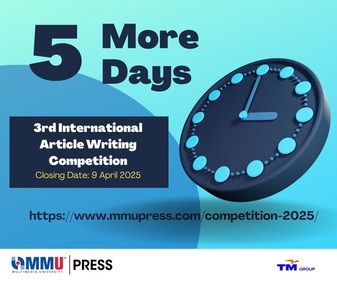4th International Article Writing Competition (IAWC 2026)
2025-12-05
Dear Authors,
The Journal of Informatics and Web Engineering (JIWE) invites researchers, academicians, and students to take part in the 4th International Article Writing Competition 2026 (IAWC 2026). This competition offers a good platform to share your ideas and highlight your work at the international level.
We encourage you to join and let your research stand out.

